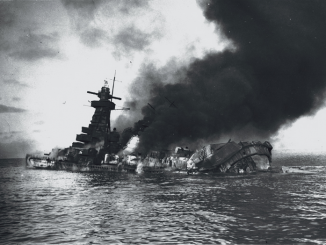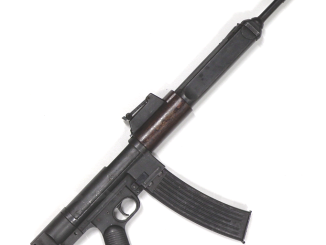This particular 1902-made example of the C96 Mauser incorporates several experimental features of the design that would never go into mass production. It was an effort to make a version of the C96 that would be more suitable for civilian carry – something a bit lighter and more compact than the military style. To this end, it has a smaller grip profile, a shorter barrel, and a shortened 6-round magazine. Most evidently, it also has an experimental safety that was intended to be more suitable for one-handed use. Unfortunately, the safety bit into the shooters hand badly with each shot, and only a few were ever made before the idea was dropped.
Related Articles

Semiauto pistol
C96 “Broomhandle” Mauser
Tuesday is normally a day I get to yakking about some gun-related subject, but I’m pretty beat form a long day and nothing is coming to mind that seems like it would be of interest […]

Semiauto pistol
Ballester-Molina Pistols from German Pocket Battleship Armor?
There is an old gun shop tale that Argentine Ballester-Molina pistols were made form the salvaged armor plate of the pocket battleship Admiral Graf Spee. The Graf Spee was scuttled in the Rio de la […]

Prototype
Gerat 06: Germany’s Incremental Steps Towards Roller Delay
The Gerät 06 is one of the steps in the development of the roller delay system that became H&K. The initial experiments involved replacing the flaps in a G43 rifle bolt with simpler rollers. In […]

IIRC, the original c/96 safety held the hammer locked but did nothing to secure the sear or trigger. Meaning, if the trigger was pressed when the gun was in Condition One, releasing the safety would drop the hammer and fire the piece. The NS “New Safety” locked sear and hammer both to avoid this booby-trap.
I always wondered why the Broomhandle never had a cross-bolt firing-pin safety. The block that secured the firing pin and concentric spring inside its barrel extension would have been a reasonable place for it. Just a sliding bar that locked the firing pin, and perhaps even withdrew it forward just far enough that if the hammer was dropped by accident, it couldn’t transfer the blow to the firing pin.
Such a safety would have been more reliable and probably a bit simpler to machine than any of the safeties they actually did use.
cheers
eon
NS safety does not lock the sear. It seems some confusement occured. Ît only holds the hammer at more distance form the sear and needs two hands to actuate.
[shoots mugger] “EEEYOWCH! Who designed this safety catch?”
I am afraid the 1902 safety might have been force matched to the frame during the restauration…
The 41676 is definitely made in 1905 and the frame is consistent with the period (small ring hammer) six-shooters, whereas the 1902 “Joint Safety” (Gelenkihe Sicherung) mechanism is only found (except this one) in 28,xxx-29,xxx range.
I was just at an auction in Rolla Missouri.
Lotd of c96 were on the block.
Joint Safety SN 50002 sold for $10,000